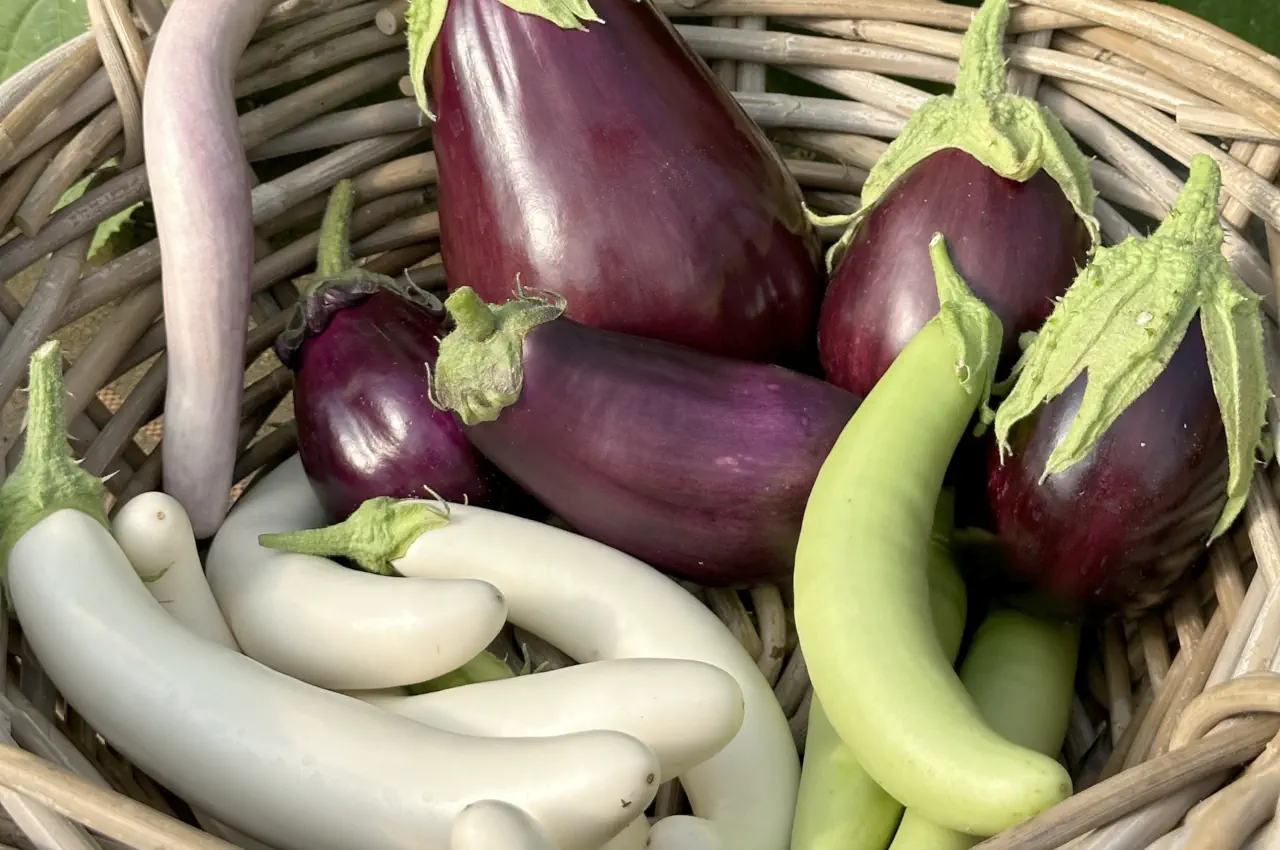Aubergines, or eggplants as they are also known, are a unique addition to any home garden. They bring a rich flavour to your dishes and look gorgeous with their glossy purple skin. But growing them from seed requires some patience and the right conditions, especially if you’re in a cooler climate. These plants love warmth, think tropical or Mediterranean levels of sunshine, and need a little more attention than some other crops. Don’t worry, though; with a few easy steps, you can grow strong, healthy aubergine plants that produce delicious fruit.
1. Start Early Indoors for a Head Start
Aubergine seeds need a cozy environment to germinate, so it’s best to start them indoors between February and April. If you’re new to growing from seed, here’s what to do:
- Choose the Right Compost: Use a good-quality seed compost like John Innes Seed Compost. This gives the seeds a nutrient-rich base.
- Sow the Seeds: Place the seeds in pots or plug trays, sowing them thinly and covering with a fine layer of compost. Gently press down to ensure contact between seeds and soil.
- Create a Mini Greenhouse: Cover the pots with a propagator lid or clear plastic to lock in warmth and moisture. Set them in a warm, bright spot—ideally at a steady 18–21°C (a sunny windowsill or heated propagator works well).
- Watch for Seedlings: In about two to three weeks, you should see the tiny green shoots pushing through. Once they appear, remove the cover and let them grow in natural light.
2. Transplant to Pots and Prepare for Outdoor Growth
Once your seedlings reach about 6 inches tall, they’re ready for the next stage:
- Transplant with Care: Move each seedling into its own pot with well-draining compost. This gives them space to grow and lets you control their watering needs.
- Plan for Warmth: Aubergines don’t tolerate frost, so if you plan to grow them outside, wait until late spring (around May) when all frost risk has passed. If possible, a greenhouse or polytunnel is ideal, but a warm, sheltered spot can also work. In cooler areas, keeping them indoors for longer or growing in large containers that can be moved indoors at night can be beneficial.
3. Provide Support and Encourage Healthy Growth
Aubergines grow tall and can get quite bushy, so providing support is important:
- Use Canes or Small Trellises: Insert stakes or a small wigwam of canes around each plant to help support their structure as they grow. This will prevent them from drooping or snapping as the fruit gets heavier.
- Pinch for Bushier Plants: When the plant reaches about 18 inches in height, pinch out the growing tip to encourage side shoots. This helps the plant develop a fuller shape and can increase your overall fruit yield.
- Limit Fruit Production: Once the plant sets three or four fruits, pinch out any extra side shoots. This focuses the plant’s energy on ripening those fruits, leading to better, larger produce.
4. Water and Feed Regularly
Aubergines are thirsty plants, so they need a consistent watering routine:
- Water Twice Daily in Hot Weather: Aubergines in greenhouses or warmer climates may require watering twice a day. Be sure to use free-draining compost to avoid waterlogging, which can lead to root rot.
- Fertilize with Care: Use a high-potash liquid fertilizer to promote flowering and fruit development. Apply it at about a quarter of the recommended strength but increase the frequency to around four times as often. This boosts their growth without overwhelming them.
5. Assist with Pollination if Needed
In the early stages, especially if you’re growing indoors or in a greenhouse, aubergines might need a little help with pollination:
- Hand Pollinate for Better Fruit Set: When the plants start flowering, gently brush each flower with a soft paintbrush or cotton swab. This mimics the natural movement of pollinating insects and can increase fruit set. Once plants are established, they often don’t need hand pollination, but it can give you an early boost.
6. Extra Tips for Happy Aubergines
- Temperature Control: Aubergines need warmth, so if you’re growing in a greenhouse, keep doors and vents open only on hot days, and close them at night to retain heat.
- Watch for Pests: Aphids and spider mites can sometimes be a problem. Check leaves regularly, and if you notice pests, spray with a gentle, organic insecticide or wash them off with water.
Growing aubergines from seed might require a bit more effort than some other vegetables, but with careful attention to warmth, water, and pruning, you’ll be rewarded with vibrant plants and delicious home-grown fruit. Enjoy your aubergine-growing journey, and look forward to a flavorful harvest!
